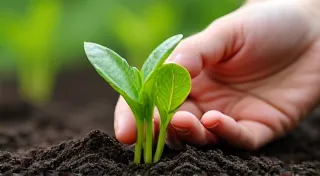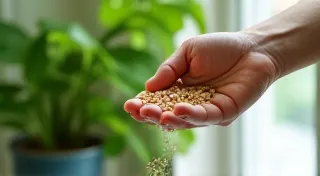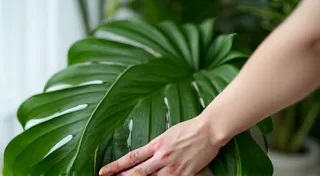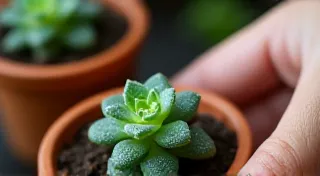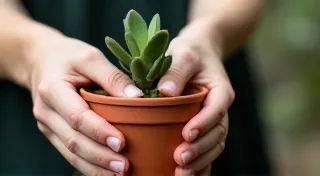Best Plants for Low Light: Thriving in Shady Spaces
Bringing greenery into your home is a fantastic way to brighten your space and improve air quality. But what if your home doesn't get a lot of sunlight? Don't worry! Many beautiful and resilient houseplants thrive in low-light conditions. This guide will introduce you to some of the best plants for shady spaces, providing you with the knowledge to cultivate a thriving indoor jungle even without abundant sunshine. Understanding the nuances of indoor plant care can seem daunting, but with the right information, even those with limited experience can enjoy a flourishing indoor garden.
Understanding Low Light
Before we dive into the plant list, let’s clarify what “low light” actually means. It doesn't mean complete darkness. It refers to areas that receive indirect light for a few hours a day, or are further away from a window. East-facing windows typically offer gentler morning light, while north-facing windows receive the least amount. South and west-facing windows receive the most light, but even these areas can provide “low light” spots further inside the room. The amount of light a plant receives is a critical factor in its health and vitality, and understanding this is the first step towards success.
Top Low Light Plant Choices
1. Snake Plant (Sansevieria trifasciata)
Also known as Mother-in-Law’s Tongue, the Snake Plant is a legendary low-light champion. It's incredibly tolerant of neglect and can handle very little light. It's also an excellent air purifier! While Snake Plants are remarkably easy, ensuring proper watering is key. Understanding the basics of watering houseplants can help you avoid common pitfalls, even with this resilient variety. Like all plants, the right potting mix is also crucial for optimal health. Consider the impact of your soil on root development and nutrient uptake – sometimes, a little extra attention to the foundation is all it takes for a plant to flourish.

Plant Care Tip: Water sparingly – allow the soil to dry out completely between waterings.
2. ZZ Plant (Zamioculcas zamiifolia)
The ZZ Plant is another low-maintenance superstar. It boasts glossy, dark green leaves and can tolerate very low light levels. It's known for its ability to store water in its rhizomes, making it incredibly drought-tolerant. Like all houseplants, ZZ plants benefit from a well-considered approach to watering; check out The Ultimate Guide to Watering Houseplants: Avoid Overwatering & Underwatering for more comprehensive advice. Furthermore, knowing when and how to repot your plants is essential for continued growth and can extend their lifespan significantly. It’s a skill that often gets overlooked but can make a world of difference in the long run.
Plant Care Tip: Rotate your ZZ Plant occasionally to ensure even growth.
3. Pothos (Epipremnum aureum)
Pothos are incredibly versatile and easy to grow. They're known for their trailing vines, which look stunning in hanging baskets or on shelves. Many varieties exist, offering a range of colors and patterns. Providing the right humidity can significantly enhance the vibrancy and health of your Pothos. Creating a more humid environment, through misting or a humidifier, can truly elevate their beauty. For some helpful humidity hacks for happy houseplants, check out our guide. Think of humidity as the unseen ingredient in a thriving plant ecosystem; it’s not just about light and water, but about the overall atmospheric conditions that contribute to a plant's well-being.
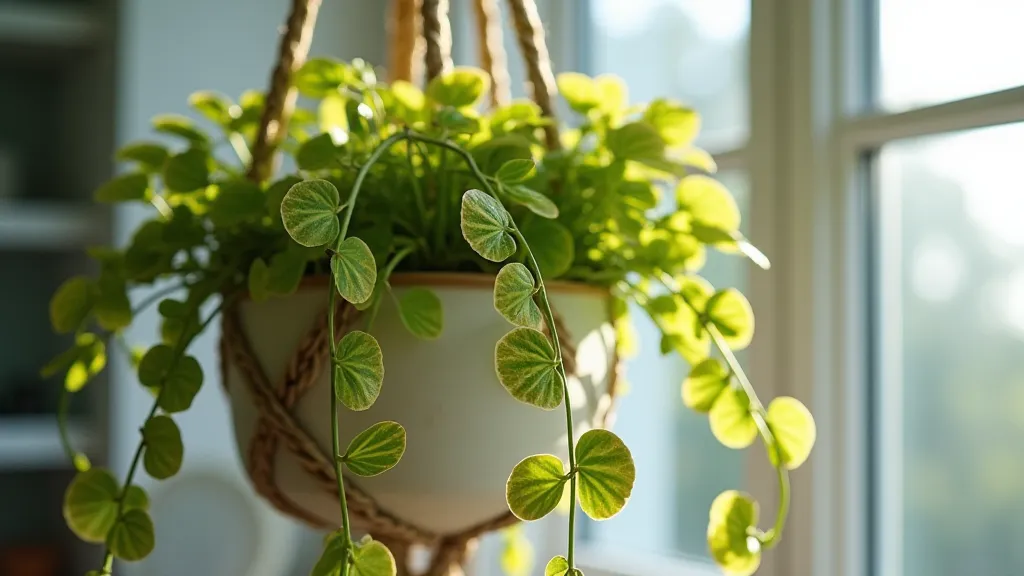
Plant Care Tip: Pothos can be propagated easily from stem cuttings. Just place a cutting in water until roots develop!
4. Peace Lily (Spathiphyllum)
Peace Lilies are known for their elegant white blooms and ability to thrive in low light. They also help to purify the air. They are a bit more demanding than the previous plants but still relatively easy to care for. Understanding their watering needs is critical; they are quite vocal when they need a drink! Peace Lilies are a wonderful addition to any home, and ensuring their wellbeing often revolves around consistent care. For more detailed advice and a deeper understanding of optimal conditions, explore seasonal plant care tips for maintaining thriving foliage. Recognizing the changing needs of your plants throughout the year—whether it's adjusting watering schedules or providing different types of fertilizer—is a hallmark of a successful plant parent. Furthermore, understanding the impact of temperature fluctuations can be vital, especially for those living in climates with significant seasonal changes.
Plant Care Tip: Peace Lilies will dramatically droop when they need water, making it easy to gauge their watering needs.
5. Cast Iron Plant (Aspidistra elatior)
The name says it all! This plant is incredibly tough and can handle neglect, low light, and fluctuating temperatures. It's a great choice for beginners. Even the most resilient plants benefit from occasional attention, though. Considering the broader rhythms of the year is important for any houseplant parent. It’s always good to review your routine and adapt to the changing seasons – you can find helpful seasonal plant care advice here. And, just as it’s important to understand the basics of light and water, knowing about common plant pests and diseases can proactively protect your green companions. Early detection and treatment can often prevent minor issues from escalating into major problems.

Plant Care Tip: Dust the leaves occasionally to ensure they can effectively photosynthesize.
General Care for Low Light Plants
Low-light plants, while tolerant, aren’t invincible. They still require some basic care to flourish. The principles outlined below will help you cultivate a thriving indoor jungle, even with limited sunlight. Don't underestimate the power of observation; spending a few minutes each day just *looking* at your plants can tell you so much about their health and happiness.
- Watering: Low light plants generally require less water than those in brighter conditions. Allowing the soil to dry out more between waterings is crucial. Overwatering is a common problem, so always check the soil moisture before watering. Consider using a moisture meter to remove the guesswork and ensure you're providing just the right amount of hydration.
- Fertilizing: Fertilize sparingly, especially during the winter months when growth slows down. Excessive fertilization can lead to salt buildup in the soil, which can harm your plants. Research the specific fertilization needs of each plant – not all plants thrive on the same type or amount of nutrients.
- Cleaning: Dust the leaves regularly to allow for maximum light absorption. A simple wipe down with a damp cloth can make a big difference. Healthy leaves are essential for photosynthesis, so keeping them clean is an act of plant care.
- Potting Mix: Use a well-draining potting mix to prevent root rot. A mix containing peat moss, perlite, and vermiculite is a good option. The right potting mix is the foundation for healthy root development and nutrient uptake.
- Light and Placement: While these plants tolerate low light, they still need *some* light. Observe your plants; if they're stretching towards the light, they likely need a bit more. Experiment with different locations to find the sweet spot. Rotating plants periodically ensures even light exposure and prevents them from leaning excessively.
- Humidity: While generally adaptable, many low-light plants appreciate a slightly more humid environment. Grouping plants together, using a pebble tray, or employing a humidifier can help boost humidity levels. Consider the native environment of your plants—many thrive in humid conditions that mimic their natural habitats.
Troubleshooting Common Problems
Even with the best care, problems can arise. Here's a quick guide to addressing some common issues. Knowing how to diagnose and address common plant ailments is a skill that grows with experience. A keen eye and a little research can often prevent small problems from becoming big ones.
- Yellowing Leaves: This can be caused by overwatering, underwatering, nutrient deficiencies, or pest infestations.
- Brown Leaf Tips: Often a sign of low humidity or inconsistent watering.
- Dropping Leaves: Can be triggered by stress, sudden changes in environment, or pests.
- Pest Infestations: Regularly inspect your plants for signs of pests like spider mites, aphids, and mealybugs.
Expanding Your Indoor Garden
Once you’re comfortable caring for these low-light champions, consider expanding your indoor garden! There’s a whole world of fascinating plants waiting to be discovered. Researching different plant varieties and their specific needs is a rewarding journey in itself. And remember, every plant has a story—learning about their origins and unique characteristics adds another layer of appreciation to the experience.
Creating an indoor oasis requires more than just choosing the right plants; it’s about creating a space that nourishes both the plants and the soul. The process of nurturing life, watching it flourish, and connecting with nature is a truly enriching experience.
